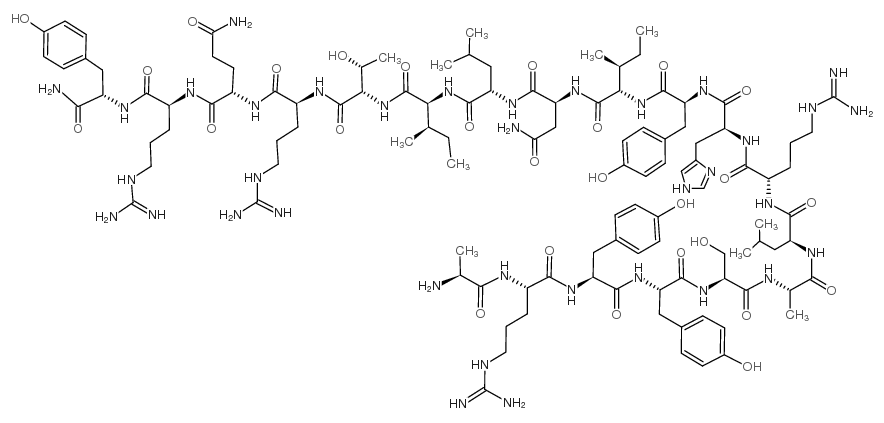Neuropeptide Y (18-36) trifluoroacetate salt
Modify Date: 2025-08-28 10:29:42

Neuropeptide Y (18-36) trifluoroacetate salt structure
|
Common Name | Neuropeptide Y (18-36) trifluoroacetate salt | ||
|---|---|---|---|---|
| CAS Number | 114495-97-5 | Molecular Weight | 2456.80000 | |
| Density | N/A | Boiling Point | N/A | |
| Molecular Formula | C112H174N36O27 | Melting Point | N/A | |
| MSDS | N/A | Flash Point | N/A | |
Use of Neuropeptide Y (18-36) trifluoroacetate saltNeuropeptide Y (18-36) (porcine) is a competitive neuropeptide Y (NPY) cardiac receptor antagonist. Neuropeptide Y (18-36) (porcine) inhibits the binding of I-NPY to rat cardiac ventricular membranes in a concentration-dependent manner with an IC50 value of 158 nM and an Ki value of 140 nM. Neuropeptide Y (18-36) (porcine) can be used for the research of congestive heart failure[1]. |
| Name | Neuropeptide Y (18-36), porcine |
|---|
| Description | Neuropeptide Y (18-36) (porcine) is a competitive neuropeptide Y (NPY) cardiac receptor antagonist. Neuropeptide Y (18-36) (porcine) inhibits the binding of I-NPY to rat cardiac ventricular membranes in a concentration-dependent manner with an IC50 value of 158 nM and an Ki value of 140 nM. Neuropeptide Y (18-36) (porcine) can be used for the research of congestive heart failure[1]. |
|---|---|
| Related Catalog | |
| Target |
IC50: 158 nM (I-NPY); Ki: 140 nM (I-NPY)[1] |
| In Vitro | Neuropeptide Y (18-36) (porcine) inhibits the binding of I-NPY to rat cardiac ventricular membranes in a concentration-dependent manner with an IC50 value of 158 nM and an Ki value of 140 nM[1]. Neuropeptide Y (18-36) (porcine) (1 μM) shifts the inhibitory adenylate cyclase activity dose-response curve of NPY to the right in a parallel fashion[1]. Neuropeptide Y (18-36) (porcine) (1 μM) completely abolishes the effect of NPY (10 nM) that alone caused 80% of the maximum inhibition of adenylate cyclase activity[1]. |
| References |
| Molecular Formula | C112H174N36O27 |
|---|---|
| Molecular Weight | 2456.80000 |
| Exact Mass | 2455.33000 |
| PSA | 1076.75000 |
| LogP | 5.67680 |

